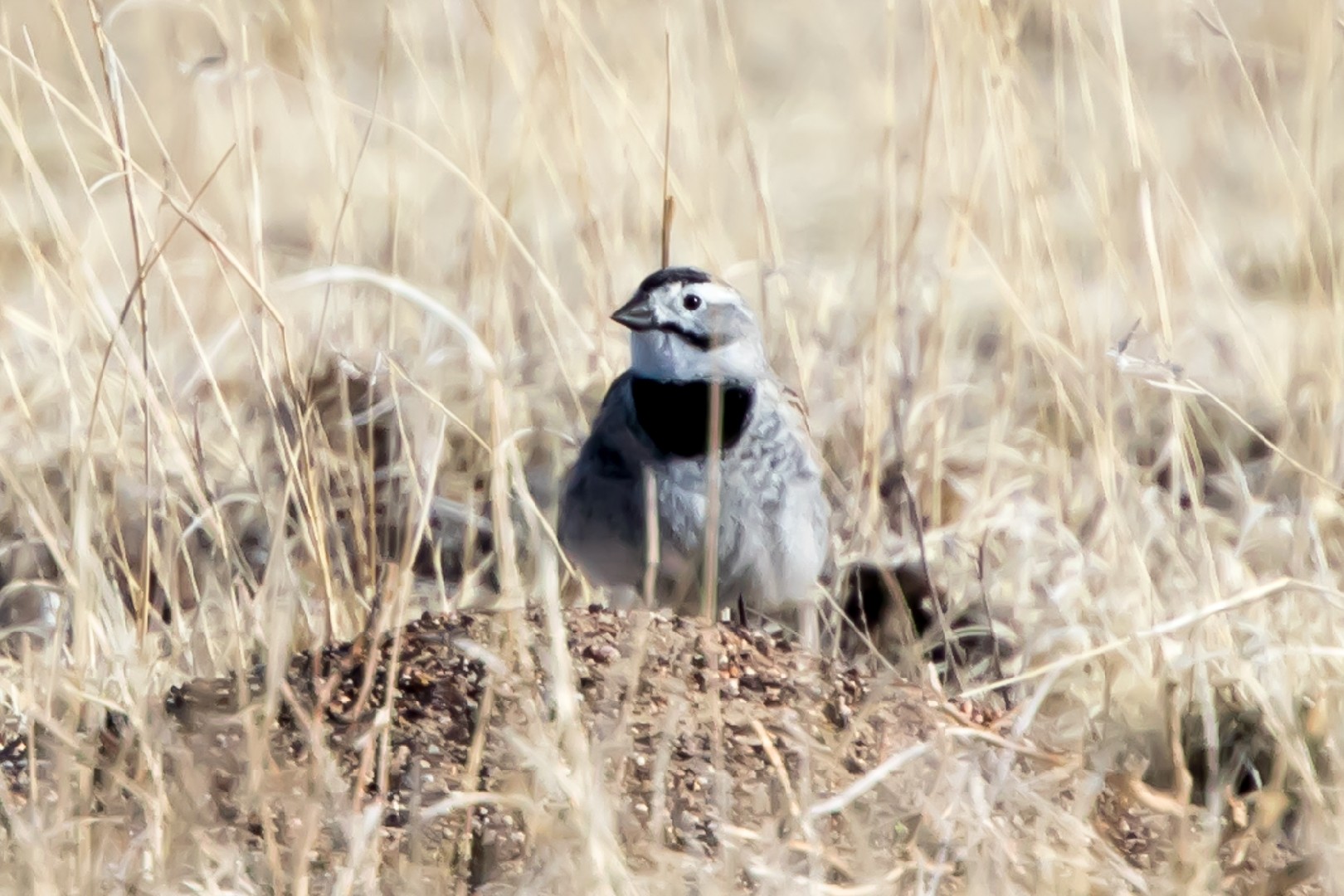Thick-billed Longspur
A species of Thick-billed Longspur, Also known as Black-breasted Longspur Scientific name : Rhynchophanes mccownii Genus : Thick-billed Longspur
Thick-billed Longspur, A species of Thick-billed Longspur
Also known as:
Black-breasted Longspur
Botanical name: Rhynchophanes mccownii
Genus: Thick-billed Longspur
Content
Description General Info
Description
Thick-billed longspurs are about 15 cm long and weigh around 25 g with a wingspan of 28 cm. They have a large cone-shaped bill, a streaked back, a rust-coloured shoulder and a white tail with a dark tip. In breeding plumage, the male has a white throat and underparts, a grey face and nape and a black crown. Other plumages are very plain brown overall with pink bills. 
Size
15 cm (6 in)
Nest Placement
Ground
Clutch Size
2 - 6 eggs
Feeding Habits
Thick-billed Longspur forage on the ground for seeds and insects, pursuing prey like grasshoppers in air or ground. They feed chicks mainly on insects, especially grasshoppers, after removing their wings and legs. While seeds are consumed year-round, grasses and forbs' seeds, as well as grains, predominate their winter diet.
Habitat
Thick-billed Longspur are predominantly found in North American grasslands, specifically the Great Plains' shortgrass prairies. They favor semi-arid steppe habitats with short to mixed vegetation, such as blue grama and buffalo grass interspersed with taller plants like opuntia cacti and sagebrush. These birds thrive at lower altitudes where overgrazed pastures resemble their ideal nesting grounds. During migration and winter, they adapt to similar open terrains, including agricultural lands and arid lakebeds.
Nest Behavior
The female thick-billed Longspur prepares multiple initial scrapes, later selecting one for the actual nest site. Nesting behavior includes ground-level egg-laying and shared parental care where both parents feed the young.
Nest Characteristics
Thick-billed Longspur builds a small cup-shaped nest into a ground scrape, located at the base of taller vegetation. The nest averages 3.4 inches in diameter, with an interior cup about 2.5 inches across and 2 inches deep, constructed from grass stems and lined with fine grasses, fur, hair, wool, or feathers.
Dite type
Granivorous
General Info
Feeding Habits
Bird food type
Behavior
Thick-billed Longspur exhibit notable breeding displays, with males arriving at grounds shortly before females, engaging in captivating ground and aerial exhibitions that involve wing-raising to reveal white underwing, fluttering, singing, and close landings near potential mates. During breeding season, males showcase monogamous tendencies, occasionally bigamy, and both sexes partake in incubation and offspring care. Post-mating, thick-billed Longspur congregate into flocks to commence southward migration.
Distribution Area
Thick-billed longspurs nest in shortgrass prairies in the northwestern Great Plains states and southern Prairie Provinces. They winter primarily in Texas and northern Mexico. There are accidental sightings elsewhere in North America. 
Species Status
The numbers and range of these birds have declined since the early 1900s, likely due to habitat loss. 
Scientific Classification
Phylum
Chordates Class
Birds Order
Perching birds Family
Longspurs and snow buntings Genus
Thick-billed Longspur Species
Thick-billed Longspur 